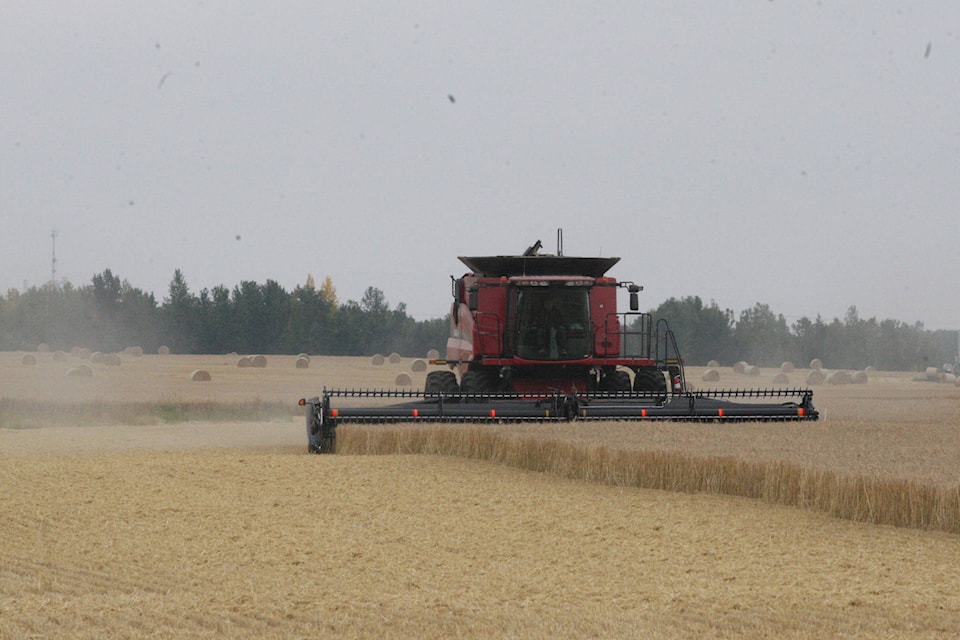Six weeks was all it took for crops to go from excellent to ewww.
As of the first week of November, harvesting activities in the province came to a halt with about 95 per cent of the crops having been taken off.
The majority of the fields managed to supply producers with yields around their average, the issue has been the look of the crops that have been put in the bin.
Harry Brook, crop information specialist with Alberta Agriculture and Forestry (AAF), explained that the weather from about the end of August to the middle of October really clobbered crops.
“It was certainly a disappointing harvest. Farmers got off what they needed to after having enough warmth and wind,” Brook stated.
“That span from close to the end of August to October, that six weeks, really punted the quality out of the crops. Even though most of the crops harvested later in October came off dry, most of what came off in September probably had better quality despite having to be significantly dried.”
He added a lot of farmers were hoping to get a one or two grade for their crops, but many wound up settling for feed grade.
“Much of what came off in that last six weeks had a lot of green seed, as most of the crop development went nowhere due to the wet and cold conditions even if they had been sprayed or were in the swath,” Brook said.
“The yields were mostly around average, it was just the quality loss that hurt with some cereals staining and bleaching plus some crops even beginning to germinate.”
That downgrade likely wound up costing farmers quite a bit, with producers potentially losing anywhere from $50 to $100 per acre.
Regional wrap
Very little, maybe about one per cent, was left behind in central Alberta fields this fall, but not every region was so fortunate in spite of the nicer weather in recent weeks.
In what Brook called a season of extremes weather-wise, areas in the northwestern sections of the province either lost a lot of their crops or still have plenty in the field.
“Areas surrounding the Barrhead and Westlock area still have a significant amount of crop left to harvest, about 12 to 15 per cent, which will likely now have to wait until spring,” he said.
“That region experienced a lot of excess moisture to go along with some other challenges that kept them out of the fields. However, that’s somewhat better than in the Peace region, who were behind on crop development already due to a later start this year only to get a killing frost in mid-September. Many in that area are also blaming the smoke from the record number of B.C. forest fires this summer as affecting their crops through limiting the amount of sunlight.”
Brook did have something good to say about the wacky weather patterns in the province since August.
“The one positive takeaway is that soil moisture levels around Alberta are back up to mostly average after being poor for much of the year,” he said.
“That’s a good sign, but not a replacement for the much needed rain the province hopefully will get in the spring. Pasture and grazing land are going to need that plus some recovery time. If they don’t, then much of that land could become non-productive.”
jordie.dwyer@ponokanews.com
Like us on Facebook and follow us on Twitter
